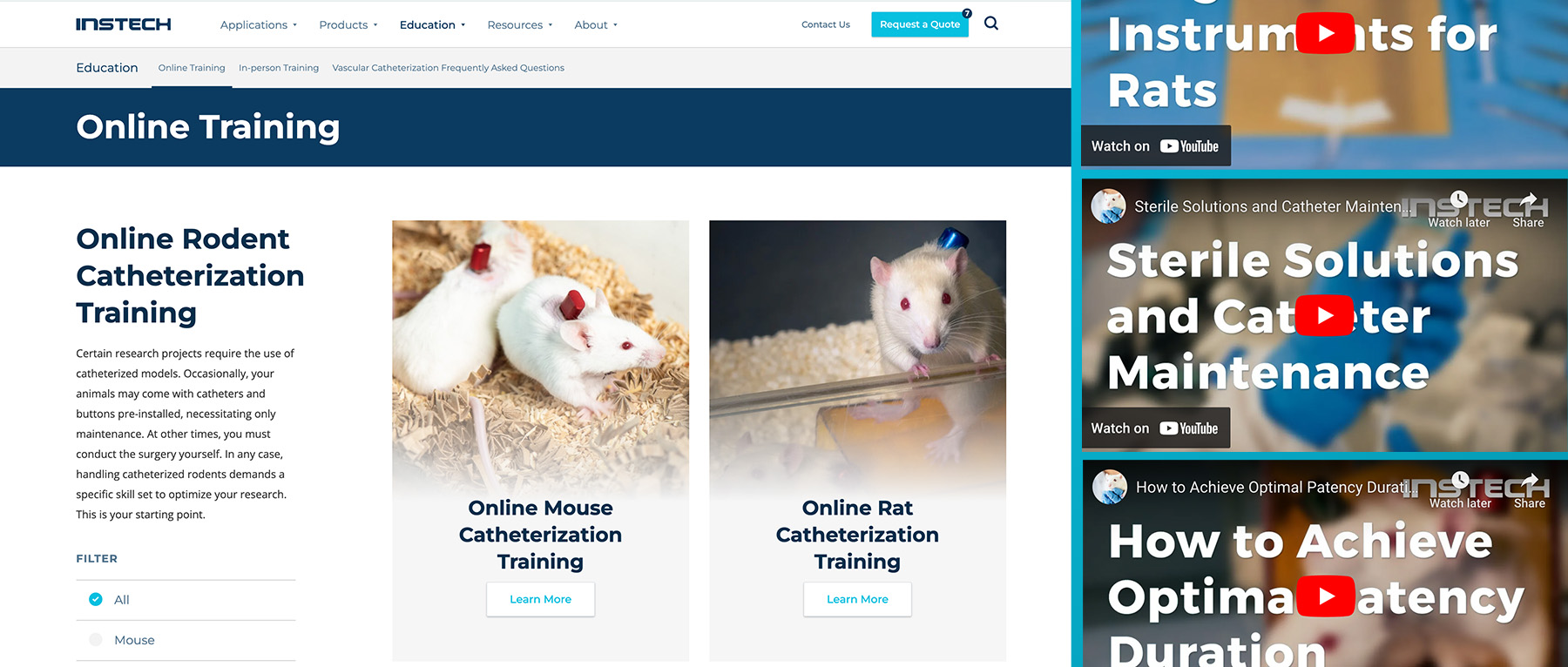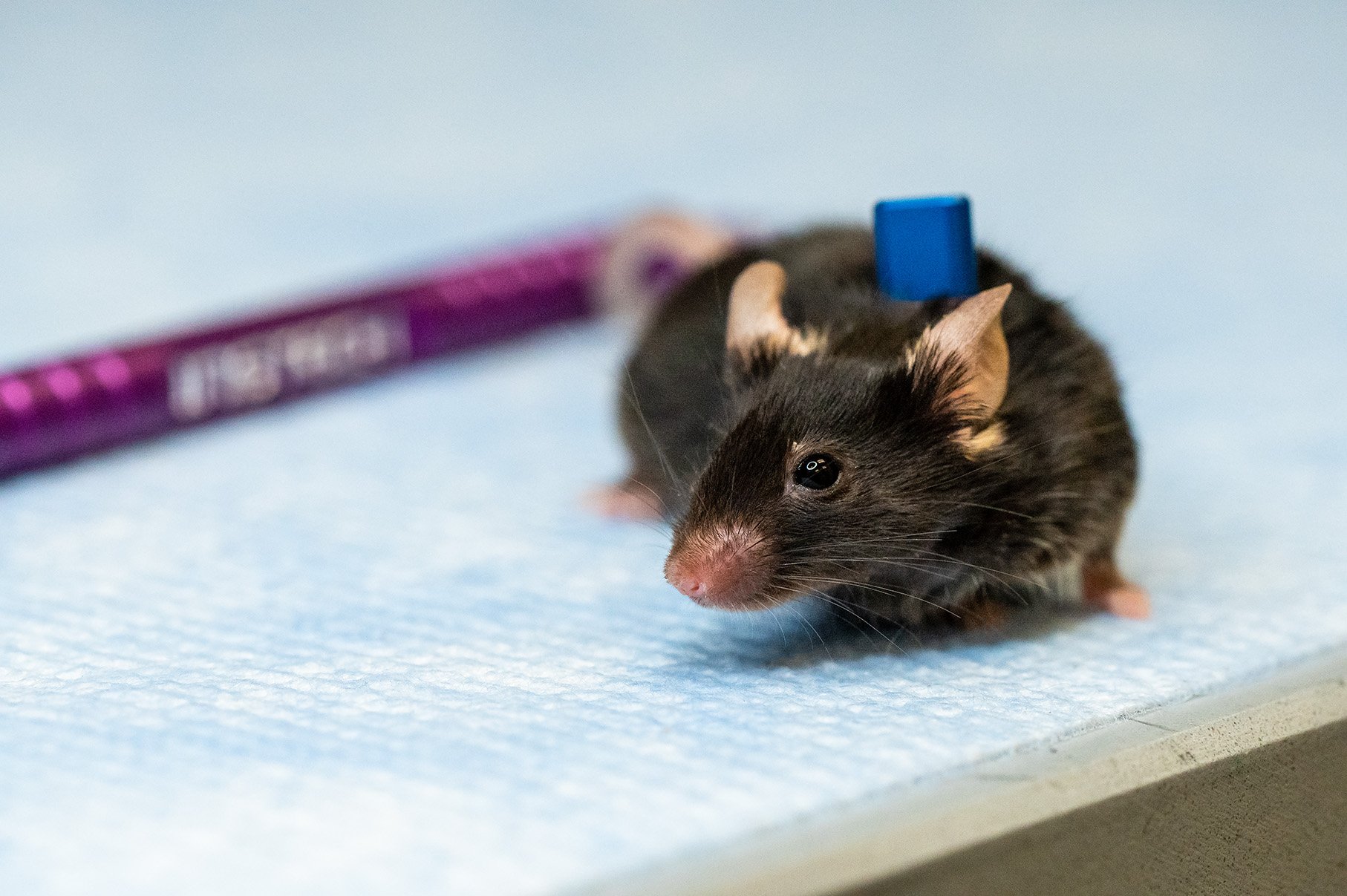Table of Contents:
- Latest Refinements and How to Achieve Optimal Outcomes in Rodent Vascular Catheterization
- Guide to Surgical Instruments for Rodent Catheterization
- What Does Laminar Flow Have to Do with Rodent Catheters?
- Does Catheter Tip Shape Impact Patency?
- Vascular Access Challenges and Solutions
- Guide to Vascular Access Buttons™
- Refining Rodent Vascular Access
- Guide to Catheter Lock and Flush Solutions for Laboratory Animal Research
- Catheter Tip Location and its Impact on Patency
- Five Keys to Patency
Latest Refinements and How to Achieve Optimal Outcomes in Rodent Vascular Catheterization
This video archive of a webinar held in January of 2024
Watch the archive of this one hour webinar as Andrée Lapierre discusses the history of rodent vascular access, starting with open systems and catheter clips to tail cuffs to jackets and harnesses to ports and now Vascular Access Buttons™. Then, she'll cover each of the following topics in detail, followed by a Q&A session at the end:
- Catheter tip positioning during surgery
- Use of a closed system
- Catheter Material and Tip Profile
- Adherence to Aseptic Technique
- The Positive Pressure Technique
Guide to Surgical Instruments for Rodent Catheterization
When preparing for survival microsurgery, there certainly is a lot to consider. Surgical skills aside, being fully prepared using atraumatic and aseptic techniques, and having the right tools for the job, can make the difference between success and failure. This guide focuses on what the right tools are and their intended purpose.
What Does Laminar Flow Have to Do with Rodent Catheters?
The flow of fluids in the small tubes used for rodent catheters is almost always governed by laminar flow. In laminar flow, fluid at the center of the tube moves faster than fluid at the edge which is held up by contact with the tube wall. This blog post focuses on laminar flow and how it affects the clearing and filling of rodent catheters.
Does Catheter Tip Shape Impact Patency?
The use of round- or square-tip catheters for rodent vascular catheterization and the resulting impact on patency has long been a debate amongst research surgeons and scientists. This blog post outlines the pros and cons of each catheter tip type and their overall impact on patency.
Vascular Access Challenges and Solutions
In this 48-minute long radio-talk-show webinar, Instech's own Lena Medina, RLATG discusses everything from sterility and long-term patency goals to catheter lock and flush solutions. The webinar highlights surgical tips, dos, and don'ts when it comes to vascular access.
Guide to Vascular Access Buttons™
A preferred animal welfare refinement over many other methods of vascular access, the VAB™ provides many advantages over their counterparts. This guide explores everything you need to know.
Refining Rodent Vascular Access
In this award-winning presentation for the Academy of Surgical Research, Lena Medina, RLATG discusses how to refine rodent vascular access using the Vascular Access Button™, with an emphasis on how they contribute to the 3Rs. Covered topics include extending patency, the importance of sterility, reducing compassion fatigue, and group housing.
Guide to Catheter Lock and Flush Solutions for Laboratory Animal Research
The approach to catheter lock and flush solutions varies greatly from one lab to the next; there is little standardization on the formulation. Some prepare them in-house under a wide range of conditions while others are under a highly controlled environment within their institution. Others purchase their solutions pre-made from clinical suppliers, or from suppliers that focus on the specific needs of laboratory animal research.
But how do you know which is right for your study? This guide takes a look at the key factors to consider when choosing catheter lock and flush solutions for your research needs.
Catheter Tip Location and its Impact on Patency
While the debate over catheter tip shape and its resulting impact on patency has been settled, it is also important to understand that much has to do with catheter tip location.
When dealing with vascular catheterization in mice and rats, the catheter tip must be positioned in the ideal location for what is considered "optimal patency." When the tip sits in the ideal location and with proper maintenance, patency can be extended for months.
Five Keys to Patency
Understanding the key factors that influence patency in catheterized mice and rats can lead to more successful sampling and infusion studies. When it comes to achieving optimal patency in catheterized mice and rats, there are five keys to achieving that success.


